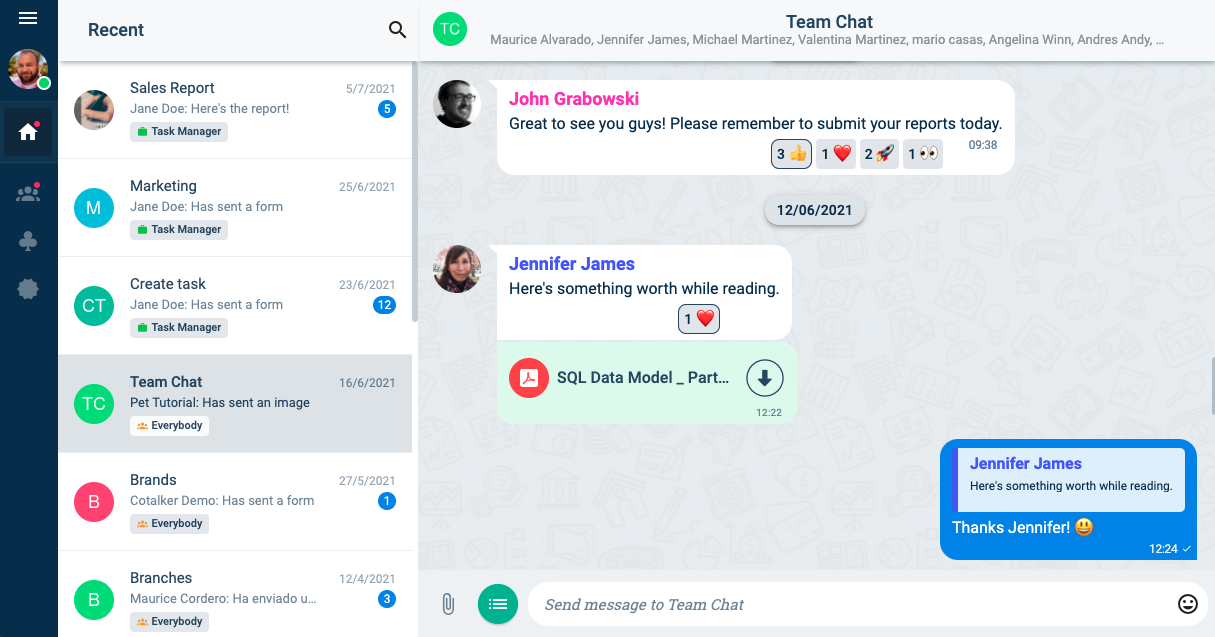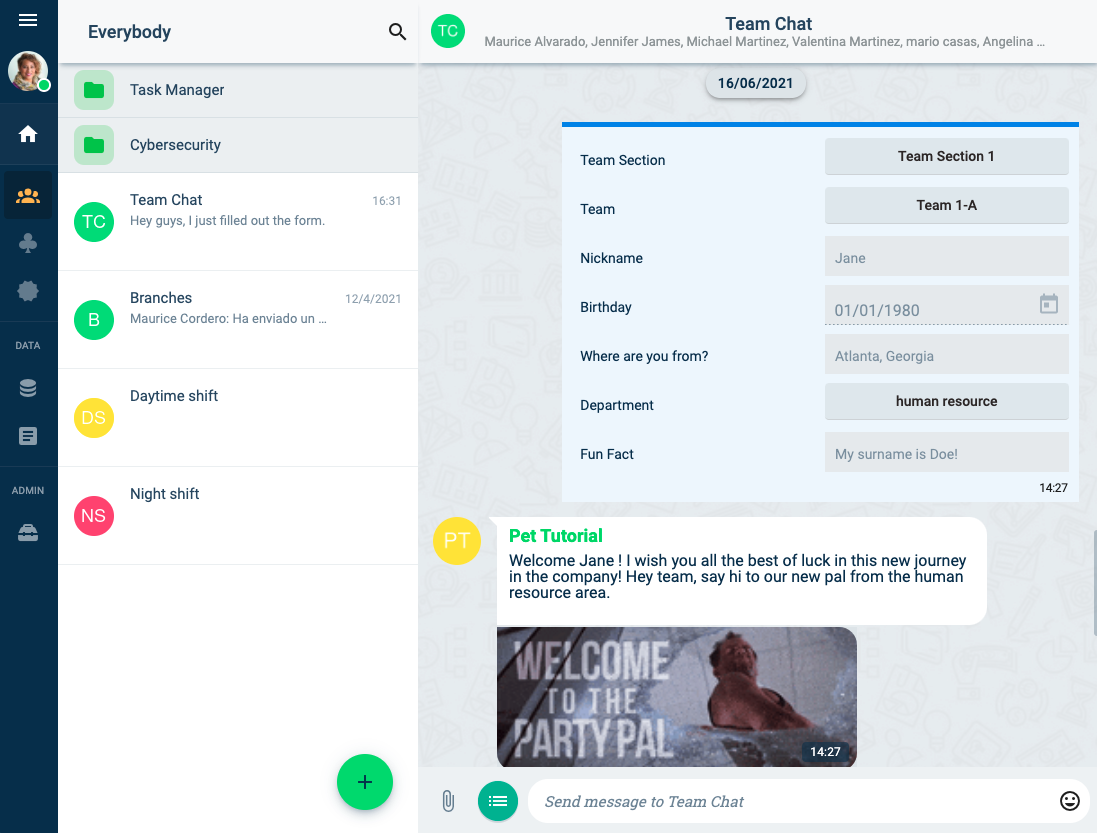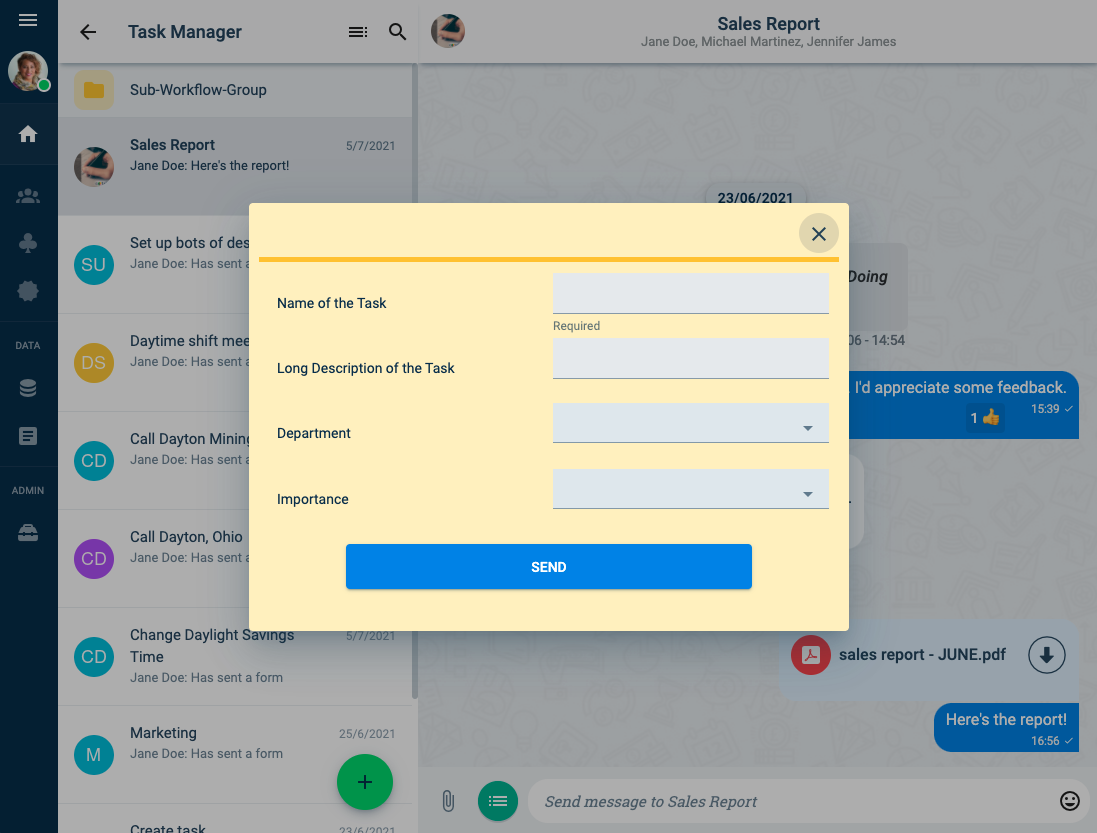Basic Concepts / Glossary
Esta página aún no se encuentra traducida al español.
Overview
In this section, we introduce basic concepts and vocabulary used in the Cotalker environment.
- For general setup instructions, see the Admin Docs.
- For step-by-step, real-world examples, check out our Tutorial section.
- For basic tools and section descriptions, go to The Basics.
Administration
Monitor, create, and expand the Cotalker environment.Admins have the power to customize and adapt the Cotalker environment through the administrative panel. Create and edit workflows, databases, users, surveys, routines, and much more.
Automation
Build routines triggered by events.With our routine builder, you can set diverse automations triggered by surveys, bots, commands, SLA, task state changes, and more.
Channel
Chat, send files, fill out forms, interact with bots, trigger events, view task information, change task status.The channel workspace is a frontend for interacting and triggering different systems, e.g., a survey within the chat can call a bot and extract data from the sales database. This interface simplifies human-machine interactions into a generic chat and normalizes all systems into a simple view.
In channels associated with tasks, you can view and change a task's state or status, assign users and determine deadlines.
Channel with messages and file sharing:

Channel with filled out form and automated bot response:

Channel with task info side panel:

Collection
A collection is like a database table.A collection – sometimes referred to as a property type – is a set of elements (properties). Collections – and their elements – have vast possibilities and permit organizing and connecting everything in the Cotalker environment.
Element
Elements are like the rows of a database table, but much more.Elements (or properties) are contained within a collection. They are used to establish a relationship or define something. That's why you can use elements sometimes as a resource and others as an asset.
For example, you can send a specific text to all the users that have the "Special Message" element. Since each user is simply a collection, you can add elements to them.
Additionally, workflows use elements to define their states.
As you can see, the versatility of elements is quite significant.
State
A state is a status a task can assume within a workflow.Tasks or assets assume and change states in the workflow process.
Workflow states are set up through the elements of a collection.
Surveys
Create forms for getting data or initiating processes..Surveys are the base tool for workflows. Among other things, surveys allow users to start processes, make reports, change data, assign tasks, and execute any custom process adapted to your workflow.
Workflow Start Form:

Tasks
A task is the representation of an asset and its state.In general, a task is something that someone has to do but can be much more than that.
✏️ The Cotalker platform, digitalizes a real-life task or asset and places it within a lifecycle or process.
♺ This lifecycle or process is known in Cotalker as a workflow.
🪜 Each step of the process or workflow is called a state.
Here are just some examples of tasks and their possible states within a workflow:
| Asset/Task | States |
|---|---|
| Assignment | Open, Closed |
| Job posting | Scouting, Interviews, Position Filled |
| Client | Lead, First Meeting, Deal Closed |
| Issue | Open, Verified, Fixed |
| Contact | Pending, Responded |
| Machine | Working, broken, At maintenance |
| Store | Good, Average, Bad |
- Tasks are created within task groups.
- Every task group is the representation of a workflow group.
- A workflow group can contain one or more workflows.
Workflows
A Workflow is the process your tasks go through.Workflow diagram with its states:

Create customized workflows for your tasks through easy-to-fill-out forms. Add routines with built-in bots that permit all sorts of automations, or even create your own.
A workflow is sometimes referred to as a state machine.